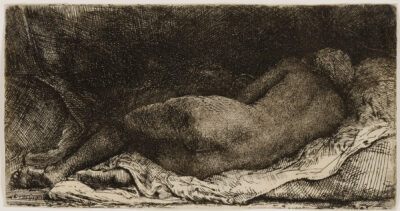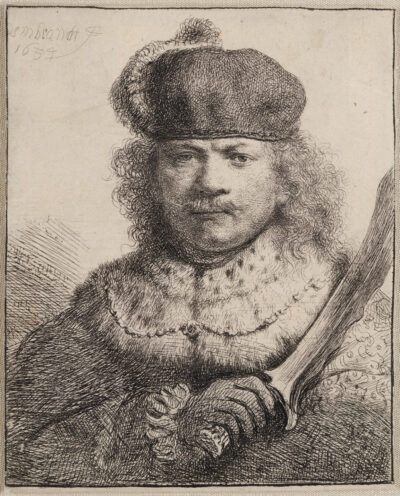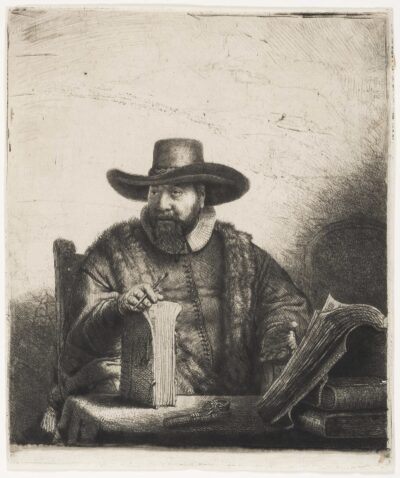Peasant Family on the Tramp
Rembrandt Van Rijn
Peasant Family on the Tramp
etching
c. 1652
An original Rembrandt Van Rijn etching.
c. 1652
Original etching printed in black ink on laid paper.
A superb 18th century impression of Bartsch’s second state of two, Usticke’s second state of four, New Hollstein’s second state of three, printed after the correction of the false biting with cross-hatching and the addition of three short vertical lines to the middle of the pack, but prior tho the plate being heavily re-bitten.
Catalog: Bartsch 131 ii/ii; Hind 259; Biorklund-Barnard 52-3; Usticke 131 ii/iv, New Hollstein 266 ii/iii.
Size Image: 4 7/16 x 3 11/16 inches
Sheet Size: 4 9/16 x 3 13/16 inches
As early as the eighteenth century the figures in this etching had been described as a peasant family, and not as beggars, although to our modern eyes the difference is not so obvious. The man in the center wears an old fashioned jerkin with split pleated sleeves and on his back he carries an object that may be either a bag of a hurdy-gurdy. He walks with a stick in his one hand and with the other holds the hand of an inquisitive child who is looking around. The barefoot mother follows behind them. One scholar has pointed out that the depiction of these figures, which differ from Rembrandt’s early beggars, is utterly lacking in the then customary satire. This is associated with the change in attitude on the part of seventeenth-century Dutch society to beggar and street folk, which may have been reflected in the artist’s work.




